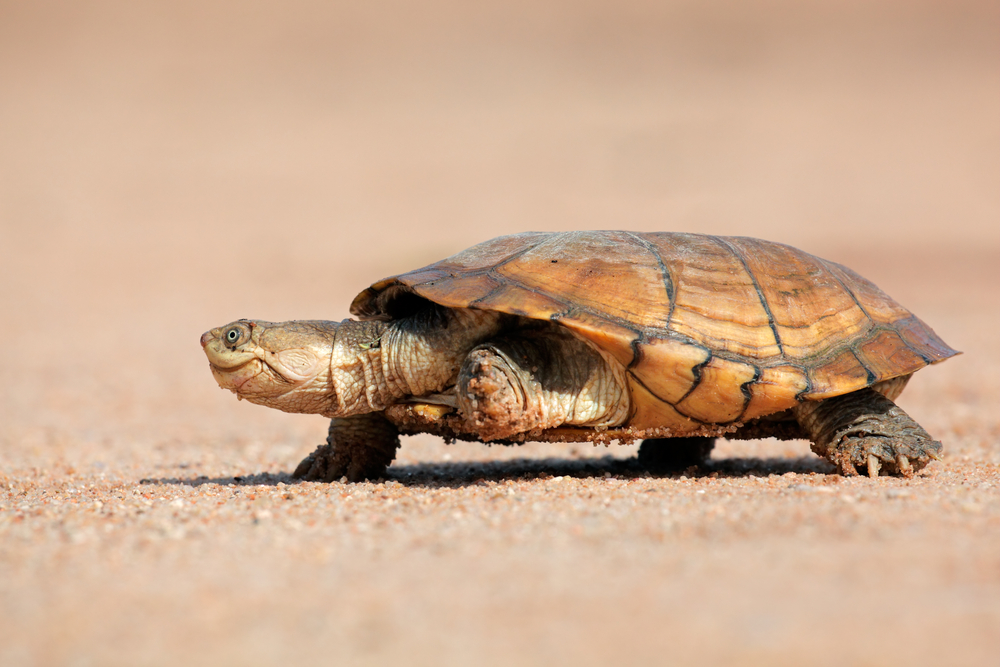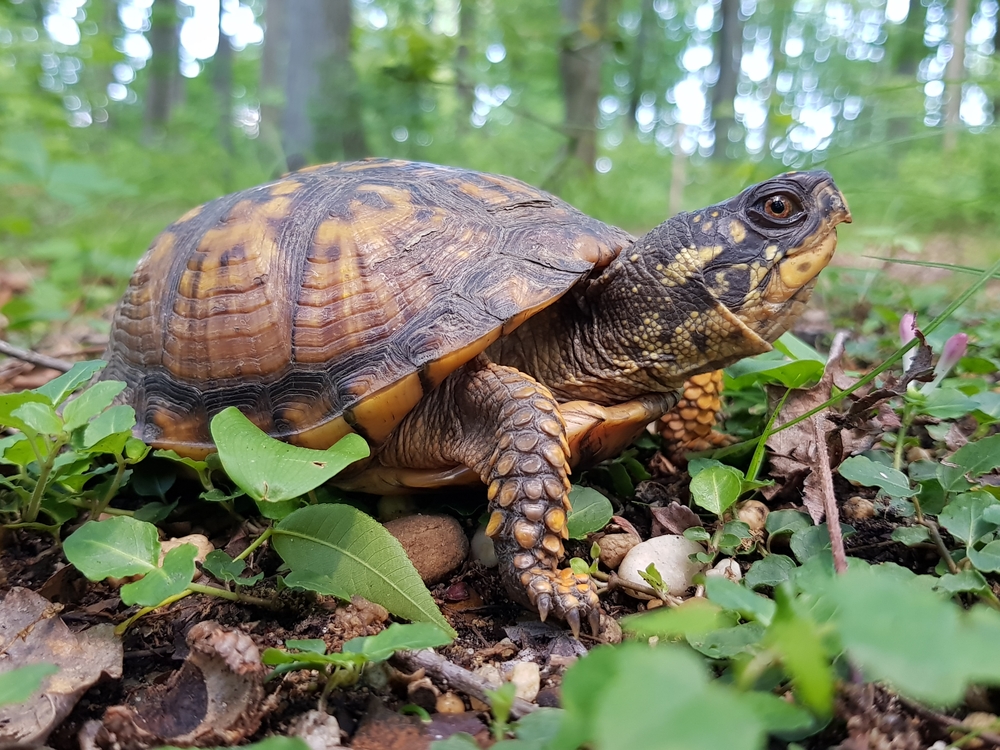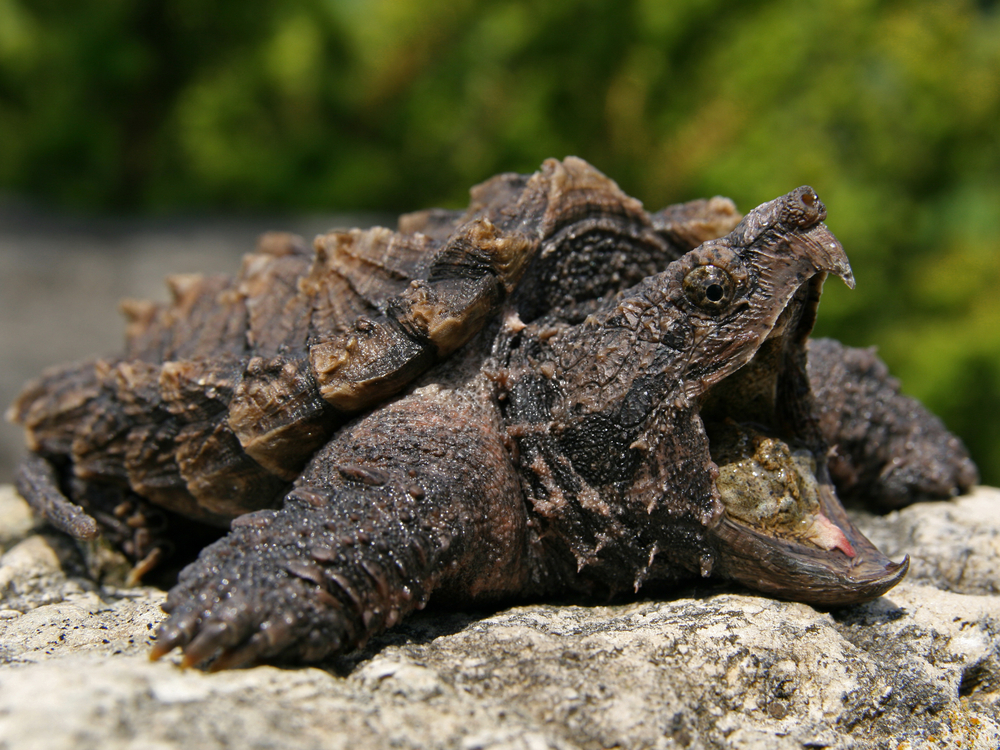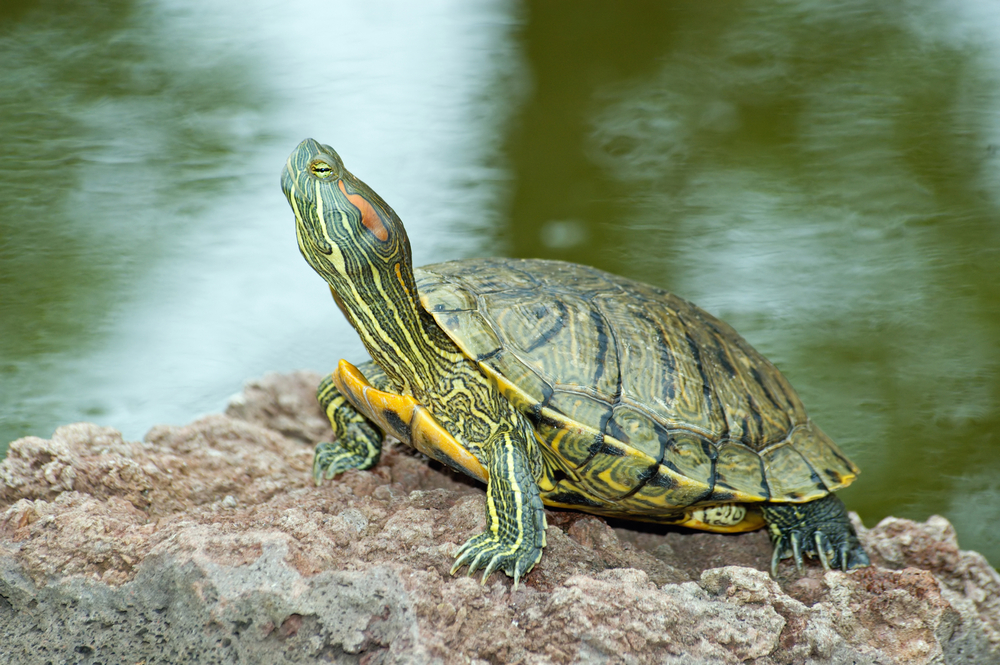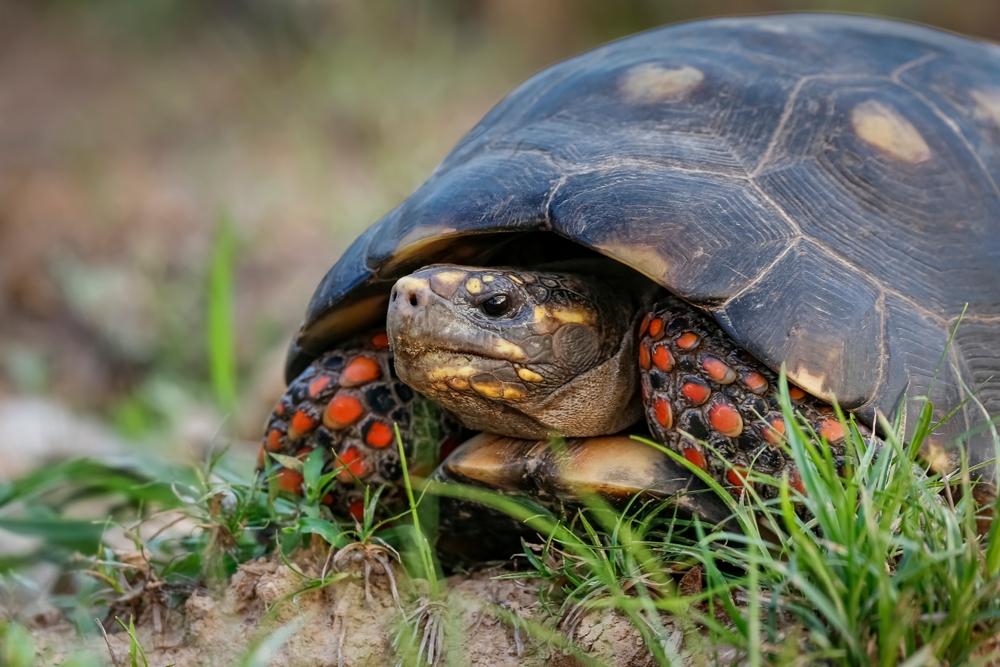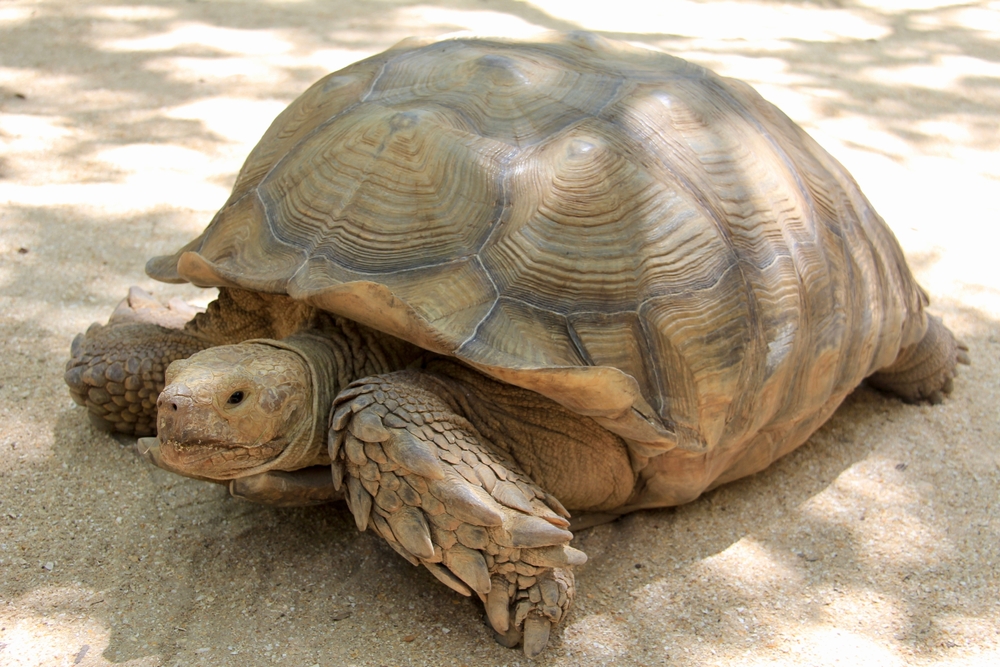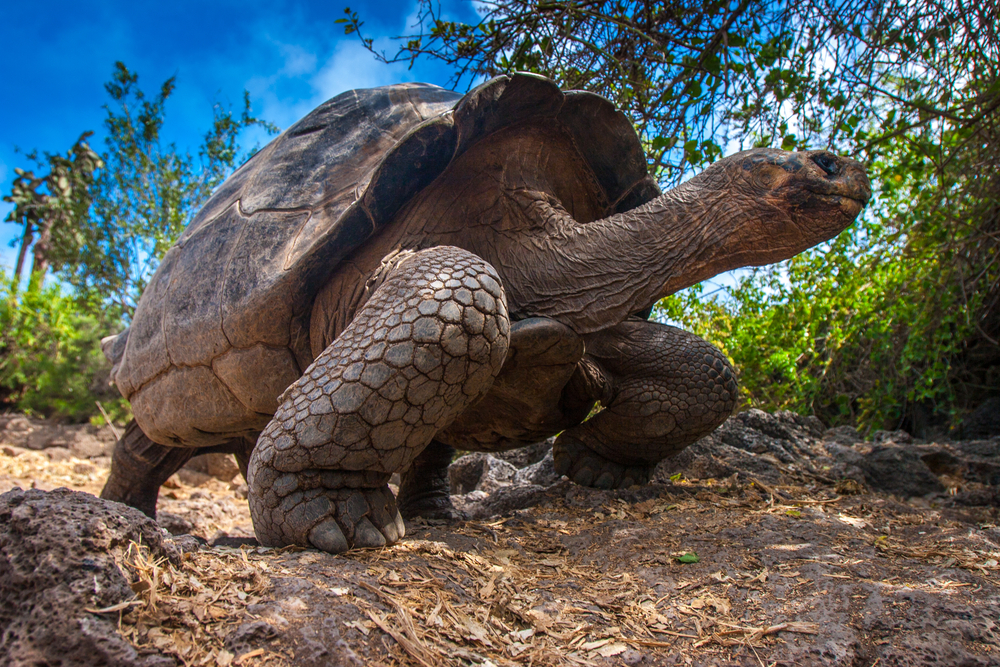The closest species to the helmeted terrapin (Pelomedusa subrufa) are other members of the Pelomedusidae family, particularly the African mud turtles (Pelusios spp.). These turtles also belong to the side-necked group and share similar habitats and reproductive behaviors, though they typically have flatter shells and different head shapes.
About
The helmeted terrapin is a small, adaptable freshwater turtle native to sub-Saharan Africa and parts of Madagascar, thriving in a wide range of aquatic habitats including ponds, rivers, marshes, and seasonal pools. Known for its tough build, domed shell, and ability to survive dry periods by burrowing, it is one of Africa’s most widespread and resilient turtle species.
Adults typically reach 20–25 cm (8–10 inches) in shell length, with females generally larger than males. The carapace (top shell) is smooth, oval, and varies in color from dark brown to olive or black, while the plastron (bottom shell) is lighter. The species gets its name from the helmet-like shape of its broad, domed head and the way it tucks its head sideways into the shell—a trait of the Pelomedusidae family (side-necked turtles).
Helmeted terrapins are omnivorous and opportunistic, feeding on aquatic invertebrates, fish, frogs, carrion, plant material, and even small birds or mammals that venture too close to the water. They are known for their bold feeding behavior and may congregate in groups during feeding frenzies.
During the dry season, when water sources evaporate, helmeted terrapins survive by aestivating—burrowing into the mud and entering a dormant state until rains return. This adaptation allows them to thrive in highly variable environments.
Reproduction is oviparous, with females laying clutches of 2–20 eggs in sandy or soft soil near water bodies. Hatchlings emerge after 2–3 months and make their way to water.
The helmeted terrapin’s scientific name is Pelomedusa subrufa, and it belongs to the family Pelomedusidae.
Physical Characteristics
The helmeted terrapin (Pelomedusa subrufa) features an oval, domed carapace that is smooth and slightly flattened. The shell color varies from olive-brown to dark gray, often with a lighter or yellowish border. The plastron (underside) is lighter in color and may have dark blotches. Unlike many turtles, it cannot fully retract its head into the shell but instead bends its neck sideways beneath the shell edge—a trait common to all side-necked turtles.
Head and Neck:
This species has a broad, flat head with large eyes and a rounded snout. The head is typically olive to gray, sometimes with lighter spots or streaks. The long, flexible neck is a defining trait, allowing the terrapin to fold it sideways rather than withdrawing it straight back.
Limbs:
Helmeted terrapins have strong, webbed feet well-adapted for swimming. Their forelimbs have claws that assist in digging and gripping slippery surfaces. The limbs are usually dark-colored and covered in scales, suitable for both aquatic and terrestrial movement.
Tail:
The tail is relatively short and inconspicuous in females but longer and thicker in males.
Size:
-
Length: Adult helmeted terrapins generally measure 6 to 10 in (15 to 25 cm) in carapace length.
-
Weight: Adults typically weigh between 1.1 to 4.4 lbs (0.5 to 2 kg), depending on age and sex.
Sexual Dimorphism:
Males are typically smaller than females but have longer, thicker tails and a slightly concave plastron to assist in mating.
The helmeted terrapin’s combination of a domed shell, side-necked defense posture, and semi-aquatic adaptations allows it to thrive in a wide variety of habitats across sub-Saharan Africa and parts of the Middle East.
Reproduction
Mating Behavior:
Helmeted terrapins are seasonal breeders, with mating usually occurring during or shortly after the rainy season when aquatic habitats are at their fullest. Males approach females with nuzzling and circling behaviors, often engaging in gentle biting or nudging to stimulate mating.
Copulation:
Mating occurs in water, with the male mounting the female’s shell and using his claws to grip her securely. Copulation may last for several minutes.
Nesting and Egg Laying:
After mating, the female leaves the water in search of sandy or loose soil to construct a nest.
-
Clutch Size: Typically ranges from 6 to 20 eggs, but larger females may lay more.
-
Egg Shape and Size: Eggs are oval and white, measuring about 1 to 1.5 in (2.5 to 3.8 cm) in length.
Incubation:
-
Duration: Incubation ranges from 90 to 120 days, depending on temperature and environmental conditions.
-
In cooler conditions, hatching may be delayed, and in some areas, eggs may overwinter and hatch with the next season’s rains.
Hatchlings:
Newly hatched terrapins are fully independent at birth.
-
Size at Birth: Hatchlings measure around 1 in (2.5 cm) long.
-
They often emerge after heavy rains, taking advantage of temporary pools and flooded areas for shelter and food.
Maturity:
Helmeted terrapins typically reach sexual maturity between 5 to 7 years of age, though growth rates vary depending on habitat quality and food availability.
This reproductive cycle, timed with seasonal rainfall, enables helmeted terrapins to synchronize hatching with the most favorable conditions for survival, ensuring access to water and abundant food for the vulnerable young.
Lifespan
Lifespan in the Wild:
In their natural environments—seasonal wetlands, ponds, rivers, and temporary pools across sub-Saharan Africa—helmeted terrapins typically live 15 to 25 years. Lifespan in the wild can be shortened by predation, drought, disease, and habitat disturbance.
Lifespan in Captivity:
When kept in well-managed enclosures with proper diet and veterinary care, helmeted terrapins can live significantly longer.
-
Average Captive Lifespan: 25 to 30 years
-
Some individuals have reached up to 35 years or more under ideal conditions.
Threats to Longevity:
-
Habitat Loss: Draining of wetlands and construction projects reduce breeding and foraging grounds.
-
Drought: Prolonged dry periods can cause dehydration and starvation, especially in fragmented habitats.
-
Pollution: Pesticides and runoff in aquatic systems pose serious health risks.
-
Human Interaction: Collection for the pet trade and accidental deaths from vehicles and agricultural equipment also contribute to mortality.
-
Predation: Eggs and hatchlings are highly vulnerable to predation by birds, mammals, and reptiles.
Despite their resilience and ability to aestivate during dry periods, helmeted terrapins face growing challenges from environmental changes and human encroachment. Conservation of their aquatic habitats is key to supporting long-term population health.
Eating Habits
Diet:
Helmeted terrapins are omnivores with a preference for animal matter, making them opportunistic feeders in aquatic environments.
-
Animal Foods: Their diet includes insects, crustaceans, mollusks, fish, amphibian eggs, tadpoles, and carrion.
-
Plant Material: They also consume aquatic vegetation, algae, and occasionally fallen fruit or soft plant matter, especially when animal prey is scarce.
Feeding Behavior:
-
Helmeted terrapins are active hunters and scavengers, often seen foraging in shallow waters or along muddy banks.
-
They use sharp beaks and strong jaws to seize prey and crush shells.
-
In murky or stagnant water, they rely on chemical and tactile cues to detect food.
Foraging Times:
-
They are generally diurnal, feeding during the day, but may shift to crepuscular or nocturnal activity during hot or dry seasons.
-
Their feeding behavior intensifies during and after the rainy season when prey is abundant.
Adaptations for Feeding:
-
They can feed both in water and on land but prefer aquatic environments where their webbed feet and flattened body aid in movement and maneuvering.
-
In drought conditions, helmeted terrapins may aestivate (enter a dormant state), slowing their metabolism until conditions improve.
Captive Diet:
In captivity, their diet should mimic natural variety and include insects, worms, fish, aquatic plants, and occasionally leafy greens. Protein intake must be moderated to prevent shell deformities and organ stress.
The helmeted terrapin’s flexible and opportunistic diet enables it to thrive in fluctuating wetland habitats, making it a resilient species in both permanent and seasonal aquatic ecosystems.
Uniqueness
Side-Necked Anatomy:
The helmeted terrapin (Pelomedusa subrufa) is a side-necked turtle, meaning it bends its head sideways under the shell rather than pulling it straight back—a trait unique to the Pelomedusidae and other related families. This feature sets it apart from most other freshwater turtles.
Helmet-Like Head Shape:
Its name derives from its distinctively domed and rounded head, which, when retracted sideways under the shell, resembles a helmet. This trait, along with its tough skin and head shape, gives it added protection in harsh environments.
Extreme Habitat Flexibility:
Helmeted terrapins are highly adaptable, thriving in a wide range of aquatic habitats, from temporary rain-filled pools to permanent ponds, marshes, and slow-moving rivers. They are among the few freshwater turtles that can survive long dry periods through aestivation, burrowing into mud and slowing their metabolism until water returns.
Explosive Breeders:
During heavy rains, helmeted terrapins respond with synchronous mass movements and breeding frenzies in temporary pools. These large, coordinated gatherings are uncommon in many other turtle species and give them an advantage in unpredictable environments.
Opportunistic Feeding Behavior:
Unlike strict herbivores, helmeted terrapins are voracious scavengers and hunters, consuming a wide array of small animals, eggs, and carrion. This omnivorous diet contributes to their survival in changing conditions and food-scarce environments.
Wide Distribution:
This species is one of the most widespread freshwater turtles in Africa, found across nearly all of sub-Saharan Africa and parts of the Middle East. Its range and adaptability make it one of the continent’s most ecologically successful reptiles.
Pet Trade Survivors:
Helmeted terrapins are often traded as pets and are notoriously hardy, able to withstand poor conditions better than many turtle species. However, this hardiness should not be mistaken for low care needs, as they still require proper habitat and diet.
The helmeted terrapin’s unique anatomy, survival strategies, and ecological adaptability make it a standout species among freshwater turtles—not just in Africa, but worldwide.
Be the First to Share Photos of This Species.
FAQ’s
1. What is the closest species to the Helmeted Terrapin?
2. How does the Helmeted Terrapin compare to other turtles?
The helmeted terrapin differs from most turtles in several key ways:
-
It is a side-necked turtle, retracting its head sideways rather than vertically.
-
It is highly adaptable, surviving in both temporary and permanent water bodies.
-
It exhibits aestivation, a survival tactic not common among many other turtles.
-
Unlike strict herbivores, it is opportunistically carnivorous, actively hunting and scavenging.
These traits make it more resilient in harsh or seasonal environments compared to many freshwater turtles that require more stable habitats.
3. What national parks provide the best chances to see a Helmeted Terrapin?
Helmeted terrapins are widespread across sub-Saharan Africa. National parks that offer excellent chances to see them include:
-
Kruger National Park (South Africa)
-
Chobe National Park (Botswana)
-
Kafue National Park (Zambia)
-
Serengeti National Park (Tanzania)
-
Etosha National Park (Namibia)
These parks contain seasonal and permanent water bodies—ideal habitats for observing helmeted terrapins, especially during or just after the rainy season when they are most active.



































































